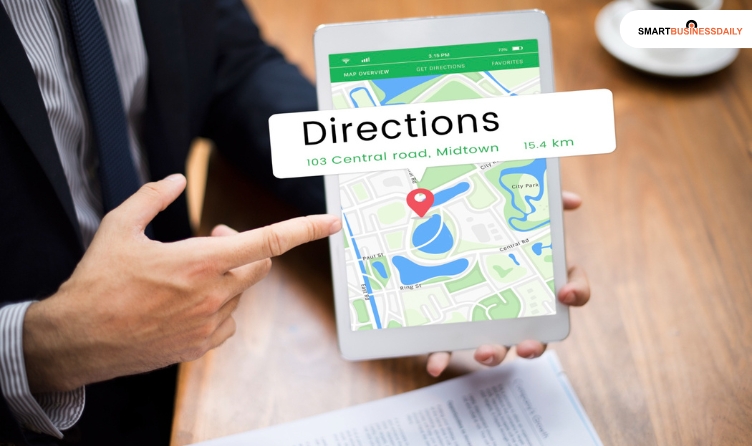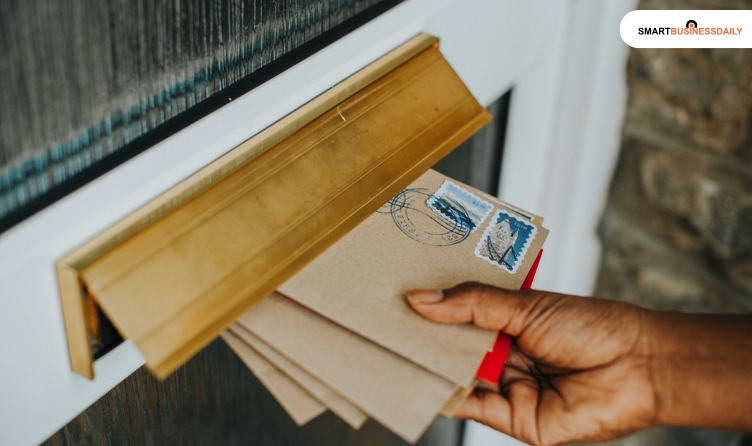How Long Will Mail Take from ZIP Code to ZIP Code?
30 October 2024
8 Mins Read

toc impalement
If you are into business, you must have searched online “how long will mail take from zip code to zip code calculator” at least once! No, I am not looking down on you. This is a very natural thing for all business owners to do.
The mailbox practically seems out of place in today’s world, dominated by the urgency of digital communication. However, the reliability of the postal service is much more apparent in the flurry of emails and texts.
Businesses must understand the precise time it takes for mail to go from one zip code to another in an increasingly fast-paced environment. With the consistent speed of postal service, we can optimize supply chains, streamline billing, and coordinate focused marketing campaigns.
In this age of information overload, knowing how long mail will take from zip code to zip code will help you comprehend postal timelines, opening the door to a world of efficient planning that will help you and your business stay ahead of the curve.
ZIP Codes: What are They and How Do They Work?

ZIP Codes are a crucial part of the U.S. mailing system. The United States Postal Service (USPS) originally implemented them in 1963 to expedite and improve letter delivery.
Determining particular geographic locations, such as ZIP or the “Zone Improvement Plan,” helps sort and distribute mail more swiftly.
Each ZIP code comprises a number, generally five, but occasionally nine. These figures provide valuable information about the region they represent; they are not arbitrary.
The first digit represents a group of U.S. states, followed by a region or a large city within that group, and finally, two more specific digits that route the mail to a specific post office or location.
In the ZIP Code 90210, for instance, “9” indicates the western United States, “02” focuses on the Los Angeles region, and “10” identifies the Beverly Hills region.
The extended nine-digit format, known as ZIP+4, adds four more digits to help identify a specific place, such as a building, apartment, or commercial complex.
While the extra four digits aren’t usually required, certain companies and delivery utilize them to increase accuracy.
In addition to mail, ZIP codes are useful for other services. They help to schedule delivery, comprehend demographics, and locate services in the area.
ZIP Codes are crucial resources that help direct the process, whether waiting for a parcel or trying to find the closest post office.
ZIP Code Delivery: How Long Will Mail Take from ZIP Code to ZIP Code?

The time it takes for mail to move across ZIP codes is called the ZIP code delivery time. This period is critical for businesses because it influences how soon products reach buyers nationwide.
Several variables affect delivery times, such as the postal service type, weather, and the distance between ZIP codes. For example, Priority Mail may provide speedier delivery at a higher price, although First-Class Mail usually delivers within 1–5 business days.
There are several crucial steps in the ZIP-to-ZIP mail delivery process, which expedites mail handling and guarantees that packages reach their destination.
Initially, the workers collect mail from multiple drop-off locations and sorted according to destination ZIP codes at nearby postal facilities.
After that, the mail is delivered to regional sorting facilities, where ZIP code regions are used to further organize it. The sorted mail is then sent to the relevant post offices in the area for ultimate delivery to the client.
When you’re sending mail, one of the big questions is how long it will take to get from one ZIP Code to another. The time it takes for mail to arrive varies, and understanding the factors that affect delivery can help you plan better.
Factors Affecting How Long Mail Takes from ZIP Code to ZIP Code

The time it takes for mail to move across ZIP Codes depends on several factors. First, distance is important.
Generally, mail traveling nationwide takes longer than mail traveling to a nearby town.
Traveling from New York to New Jersey will take less time than sending a letter from New York to California.
The kind of mail service you select is another consideration. For instance, First-Class Mail may be more expensive than Standard Mail, but it is faster. However, USPS Priority Mail usually promises delivery within one to three days, regardless of location.
There are options like Priority Express Mail that promise overnight or two-day delivery if you need something to arrive soon.
Delivery timings are also impacted by holidays and the weather. Severe weather conditions, such as hurricanes or snowstorms, can cause delays by slowing down transit routes.
Increased mail volumes during holidays like Christmas and Thanksgiving might occasionally result in slower processing and delivery times. Distribution centers’ handling and processing times are also important.
Mail frequently goes through several processing hubs after being picked up, where it is sorted and forwarded. Time is added with each step, particularly if the centers are crowded.
Here are the factors:
Type of Mail You Are Sending
The type of mail you send is one of the main factors influencing the delivery time of USPS mail.
In addition to other bulk mailing options, the USPS provides various services with varying delivery schedules. These are the top three USPS services:
- First-Class Mail
- Express Mail
- Priority Mail
The USPS’s standard mailing service is First Class Mail. Postcards, letters, large envelopes, and small items can all be delivered with First Class Mail.
The USPS classifies anything weighing 13 ounces or less as a small package. The USPS’s cheapest shipping option is First Class Mail, which has the fastest turnaround time for all their services.
According to its service standards, the USPS does not promise that its first-class mail service will arrive on time.
However, one of the benefits of First Class Mail is that it usually arrives within a window of three to five days, which is helpful for people who are wondering, “how long does regular mail take?”
The USPS’s expedited postal service is called Priority Mail. Packages weighing more than 13 ounces can be sent using Priority Mail.
Priority mail from the USPS is guaranteed to arrive within two to three days, in case you were wondering how quick it is. The USPS Priority Mail time map can also determine expected delivery times.
The fastest postal service offered by the USPS is Express Mail. Express Mail is an option for packages that require prompt delivery. Even for Saturday USPS service times, the USPS promises overnight delivery for Express Mail.
The Size of the Mail or Package
The size of the mail or package you send also influences how long it takes for USPS to deliver it.
Larger products will typically ship more slowly than smaller ones. For packages of varying sizes, the USPS offers a variety of shipping choices.
For instance, tiny products weighing less than 15.99 ounces can be shipped with USPS’s First-Class Package Service.
Delivery of these packages usually occurs in two to three days. Priority Mail is another service the USPS provides for items weighing over 15.99 ounces. Usually, these packages arrive between one and three days.
Common Delivery Challenges from ZIP Code to ZIP Code
Mail delivery isn’t always a smooth process. Some common challenges can lead to unexpected delays. Incorrect or incomplete addresses are a major issue. If the ZIP Code is missing or incorrect, they might have rerouted the mail, which takes extra time.
Another challenge is rural or remote locations. Some ZIP Codes cover vast, less populated areas where mail delivery is less frequent, sometimes only a few days a week. For these areas, delivery can take longer than in urban ZIP Codes where daily delivery is standard.
Lastly, security measures and customs checks— especially for international mail—can slow the process. Packages might need extra screening, especially if they contain items flagged by customs regulations.
Knowing these factors can help set realistic expectations for how long your mail will take. Choosing the right service and ensuring accurate addresses can help speed up delivery from one ZIP Code to another.
Distance Between the Two Zip Codes
Another element that may impact the time USPS mail arrives is the distance between the two zip codes.
Mailman delivery times by zip code will vary. This is because the mail will naturally take a shorter time if the ZIP Codes are located closer, and it will take a longer time if they are distant.
The United States is divided into nine zones by the USPS. Your mail delivery time will decrease the closer you are to the center of one of the USPS shipping zones.
For instance, your mail will pass via USPS Zone 8 if sent from New York to Florida. If sent from California to Arizona, your mail will pass via USPS Zone 5.
Time of Year/Holidays
The holidays are usually when the USPS is busiest. Therefore, delivery times for USPS mail will be slower during this period.
Preparing and giving your mail extra time to arrive if you are mailing it during the holidays is crucial. According to the USPS, packages should be shipped at least one week before Christmas Day.
Know How Long Will Mail Take from ZIP Code to ZIP Code Using Calculator

Searching for “how long will mail take from zip code to zip code calculator?” Do you want to know how well internet tools forecast the arrival time of your mail?
The solution is in the complex algorithms that power mail delivery time calculators, which convert ostensibly straightforward inputs into precise estimations.
Let’s take a closer look to understand the process better.
Zip Code to Zip Code Calculator: Step-by-Step Guide
It’s quite simple to use a postal delivery time calculator now. You only need to know where you’re going and have a working internet connection.
Simply follow the steps that I have listed below:
- Compile your information: Get the package weight and dimensions, the zip codes of the origin and destination, and the mail service you choose (e.g., Priority Mail, First Class).
- Enter the details: You may easily enter this data using the user-friendly interfaces of most calculators.
- Calculate: Your estimated delivery time will appear when you click “Calculate” or a similar button.
Understanding the Calculation Formula
I know, I know! You might think that every package is different, and so might the time. Additionally, every provider uses a different formula to get an estimated delivery time for their mail from ZIP code to ZIP code.
But here is a typical one:
- Distance calculation: The calculator calculates the distance between the origin and destination post offices using zip codes. It takes longer the farther away you go.
- The sort of service factor: Delivery times vary by mail service, such as First Class or Priority Mail. The standard transit times for the selected service are included in the calculator.
- Consider processing time: Mail must be sorted and processed before being dispatched. The calculator accounts for average processing times at origin and destination facilities to get a more realistic estimate.
- Think of possible delays: Outside variables like holidays or severe weather can impact the delivery. Certain calculators provide a range of estimated times that also consider these possibilities.
Mail Time Delivery Calculator: How Can It Help Businesses?
If you were searching “how long will mail take from zip code to zip code calculator” online, you must have already understood that a mail delivery time calculator is an easy-to-use online tool for estimating the transit time for domestic or international goods.
Businesses can use this service to arrange shipments and ensure packages reach their destinations on time.
It eliminates the ambiguity regarding delivery dates. By entering the origin and destination zip codes, package weight, dimensions, and mail class, the calculator employs complex algorithms to consider distances, mail service options, and delivery speeds. As a result, the estimate is reliable.
Read Also:


















Comments Are Closed For This Article